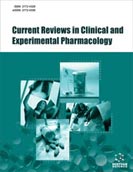Abstract
Background: Cancer is not just one disease; it is a group of diseases either genetic or metabolic due to the malfunction of mitochondria. Thus, metabolic pathways are reprogrammed to satisfy tumor cell proliferation and survival requirements.
Methods: We undertook a structured search of bibliographic databases for peer-reviewed research literature dealing with these metabolic pathways.
Results: It was found that cancer cells prefer fermentation as a source of energy even in the presence of oxygen, this altered metabolism of cancer cells may confer a selective advantage for survival and proliferation according to the Warburg effect. Furthermore, some molecules like HIF, PKM2, NADPH and others are essential to the survival of cancer cells in the hypoxic abnormal environment which has limited glucose sources.
Conclusion: As cancer cells use glucose for aerobic glycolysis as a preferred substrate for energyyielding metabolism, we discuss in this review the Warburg effect and a strategy of starving cancer cells from glucose to prevent cancer cell survival and induce apoptosis in various types of cancer which could be the key to future treatment.
Keywords: Aerobic glycolysis, cancer cells, glucose starvation, hypoxic environment, warburg effect, apoptosis.
[http://dx.doi.org/10.1186/1743-7075-7-7] [PMID: 20181022]
[http://dx.doi.org/10.1038/nrc2981] [PMID: 21258394]
[http://dx.doi.org/10.3109/10715761003667554] [PMID: 20370557]
[http://dx.doi.org/10.1016/j.ccell.2018.05.010] [PMID: 29894695]
[http://dx.doi.org/10.1146/annurev-biochem-060614-034018] [PMID: 26034893]
[http://dx.doi.org/10.1177/1177271918755391] [PMID: 29449774]
[http://dx.doi.org/10.1038/sj.onc.1208667] [PMID: 15897899]
[http://dx.doi.org/10.1038/ncb1106-1213] [PMID: 17077852]
[http://dx.doi.org/10.1074/jbc.M210269200] [PMID: 12482755]
[http://dx.doi.org/10.1158/1078-0432.CCR-06-2082] [PMID: 17289868]
[http://dx.doi.org/10.1038/nature08268] [PMID: 19693011]
[http://dx.doi.org/10.1038/nrd4002] [PMID: 24287781]
[http://dx.doi.org/10.1016/j.ccell.2018.05.001] [PMID: 29805077]
[PMID: 15695406]
[http://dx.doi.org/10.2174/1874467210801010080] [PMID: 20021426]
[http://dx.doi.org/10.1126/science.123.3191.309] [PMID: 13298683]
[http://dx.doi.org/10.1042/BJ20081258] [PMID: 18937644]
[http://dx.doi.org/10.1016/S0306-9877(98)90178-5] [PMID: 9488183]
[http://dx.doi.org/10.2174/187152011795677544] [PMID: 21453242]
[http://dx.doi.org/10.1158/1078-0432.CCR-12-1424] [PMID: 23719265]
[http://dx.doi.org/10.1371/journal.pone.0185085] [PMID: 28922380]
[http://dx.doi.org/10.1016/j.tibs.2015.12.001] [PMID: 26778478]
[http://dx.doi.org/10.1016/j.cell.2011.02.013] [PMID: 21376230]
[http://dx.doi.org/10.1158/jcr.1925.148]
[http://dx.doi.org/10.1016/j.cell.2015.08.016] [PMID: 26321679]
[http://dx.doi.org/10.1016/j.cell.2015.08.012] [PMID: 26321681]
[http://dx.doi.org/10.1126/science.1058079] [PMID: 11283355]
[http://dx.doi.org/10.1016/j.celrep.2014.03.057] [PMID: 24767987]
[http://dx.doi.org/10.1038/nrc882] [PMID: 12209157]
[http://dx.doi.org/10.3389/fcell.2019.00004] [PMID: 30761299]
[http://dx.doi.org/10.1038/s41467-018-04274-w] [PMID: 29749372]
[http://dx.doi.org/10.1126/science.1160809] [PMID: 19460998]
[http://dx.doi.org/10.1186/2049-3002-2-7] [PMID: 24982758]
[http://dx.doi.org/10.1016/j.cmet.2011.07.014] [PMID: 21982705]
[http://dx.doi.org/10.1146/annurev-cellbio-092910-154237] [PMID: 21985671]
[http://dx.doi.org/10.1007/s10863-007-9080-3] [PMID: 17661163]
[http://dx.doi.org/10.1016/j.biocel.2010.08.009] [PMID: 20797448]
[http://dx.doi.org/10.1016/j.molcel.2008.04.009] [PMID: 18498744]
[http://dx.doi.org/10.1038/465562a] [PMID: 20520704]
[http://dx.doi.org/10.1074/jbc.M108181200] [PMID: 11557773]
[PMID: 8089148]
[http://dx.doi.org/10.1016/j.ccr.2007.07.006] [PMID: 17692803]
[http://dx.doi.org/10.1182/blood.V89.2.503] [PMID: 9002952]
[http://dx.doi.org/10.1038/nature10602] [PMID: 22101433]
[http://dx.doi.org/10.1038/nature10642] [PMID: 22101431]
[http://dx.doi.org/10.1016/j.cell.2008.08.021] [PMID: 18775299]
[http://dx.doi.org/10.1016/j.biocel.2014.01.025] [PMID: 24513530]
[http://dx.doi.org/10.3892/ol.2016.4168] [PMID: 26998110]
[http://dx.doi.org/10.1038/nature06734] [PMID: 18337823]
[http://dx.doi.org/10.1016/j.tibs.2008.05.006] [PMID: 18603432]
[http://dx.doi.org/10.1038/s42255-019-0043-x] [PMID: 31058257]
[http://dx.doi.org/10.3390/metabo6040033] [PMID: 27706102]
[http://dx.doi.org/10.1016/j.pharmthera.2013.01.011] [PMID: 23356980]
[http://dx.doi.org/10.1038/nrc1478] [PMID: 15516961]
[http://dx.doi.org/10.1016/0003-9861(85)90610-1] [PMID: 3966788]
[http://dx.doi.org/10.4161/cc.8.5.7880] [PMID: 19221488]
[http://dx.doi.org/10.1016/0006-291X(87)90618-8] [PMID: 3304289]
[http://dx.doi.org/10.1016/j.cmet.2007.10.002] [PMID: 18177721]
[http://dx.doi.org/10.1016/j.mehy.2014.11.002] [PMID: 25579853]
[http://dx.doi.org/10.1016/j.bbabio.2009.11.006] [PMID: 19931505]
[http://dx.doi.org/10.1038/onc.2012.50] [PMID: 22410778]
[http://dx.doi.org/10.1038/cdd.2010.21] [PMID: 20203689]
[http://dx.doi.org/10.1083/jcb.200703099] [PMID: 17606868]
[http://dx.doi.org/10.1080/10408360701713104] [PMID: 18293179]
[http://dx.doi.org/10.1016/j.freeradbiomed.2009.12.022] [PMID: 20045723]
[http://dx.doi.org/10.1101/gad.189365.112] [PMID: 22549953]
[http://dx.doi.org/10.1038/cddis.2013.257] [PMID: 23868065]
[http://dx.doi.org/10.1038/sj.emboj.7600104] [PMID: 15010700]
[http://dx.doi.org/10.4161/auto.6788] [PMID: 18769111]
[http://dx.doi.org/10.1038/nrm2199] [PMID: 17565364]
[http://dx.doi.org/10.1016/j.tibs.2007.09.003] [PMID: 17920280]
[http://dx.doi.org/10.1016/j.redox.2018.03.017] [PMID: 29684818]
[PMID: 25061501]
[http://dx.doi.org/10.1158/0008-5472.CAN-07-1462] [PMID: 17942897]
[http://dx.doi.org/10.1126/scisignal.aam7893] [PMID: 29317521]
[http://dx.doi.org/10.1016/j.celrep.2017.02.081] [PMID: 28329677]
[http://dx.doi.org/10.1093/carcin/bgr210] [PMID: 21926111]
[http://dx.doi.org/10.1111/cas.13562] [PMID: 29516572]
[http://dx.doi.org/10.1038/msb.2012.20] [PMID: 22735335]
[http://dx.doi.org/10.1038/sj.onc.1208622] [PMID: 15806154]
[http://dx.doi.org/10.1016/j.nut.2013.07.024] [PMID: 24262514]
[http://dx.doi.org/10.1096/fj.09-149328] [PMID: 20019239]
[http://dx.doi.org/10.1016/j.ygyno.2011.04.024] [PMID: 21570709]
[http://dx.doi.org/10.1016/j.ygyno.2007.07.065] [PMID: 17825886]
[http://dx.doi.org/10.1002/ar.23454] [PMID: 27486855]
[http://dx.doi.org/10.18632/oncotarget.15429] [PMID: 28412735]
[http://dx.doi.org/10.1038/onc.2014.47] [PMID: 24632615]
[http://dx.doi.org/10.3892/ijo.2015.3242] [PMID: 26573869]
[http://dx.doi.org/10.1073/pnas.95.4.1511] [PMID: 9465046]
[http://dx.doi.org/10.1016/j.molcel.2015.08.013] [PMID: 26474064]
[http://dx.doi.org/10.2337/dc06-0997] [PMID: 16873829]
[http://dx.doi.org/10.1126/science.1120781] [PMID: 16308421]
[http://dx.doi.org/10.1530/ERC-15-0402] [PMID: 26362676]
[http://dx.doi.org/10.4103/jomfp.JOMFP_60_17] [PMID: 28932034]
[http://dx.doi.org/10.1158/1078-0432.CCR-05-2049] [PMID: 16533775]
[http://dx.doi.org/10.1128/MCB.01294-08] [PMID: 18955501]
[http://dx.doi.org/10.3892/br.2016.719] [PMID: 27602209]
[http://dx.doi.org/10.1016/j.cell.2012.12.028] [PMID: 23374352]
[http://dx.doi.org/10.1038/ncomms8882] [PMID: 26258887]































